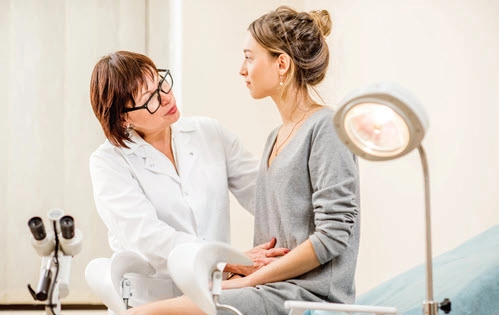Your documentation holds coding clues — you just need to know where to look.
Every GI practice sees patients with gastroesophageal reflux disease (GERD) from time to time, and while you might be adept at coding the diagnoses for this condition, it may be more challenging to code diagnostic tests like esophageal motility studies. If you could use a primer on how to report these services, check out the following step-by-step tips that will ensure that you code these services accurately every time.
Tip 1: Check for Manometry and pH Monitoring
When the GI physician evaluates the patient’s esophagus for neuromuscular disorders, they’ll typically perform esophageal manometry. These studies are used to evaluate how well the esophagus functions, and they may also be ordered to evaluate a patient prior to recommending anti-reflux surgery. The patient’s medical record will probably mention a “manometry nasal catheter” and pressure readings. You’ll report this procedure with 91010 (Esophageal motility (manometric study of the esophagus and/or gastroesophageal junction) study with interpretation and report).
Sometimes, your gastroenterologist might opt for the use of a medication stimulant during the motility studies. In such a scenario, you report the additional procedure with +91013 (Esophageal motility (manometric study of the esophagus and/ or gastroesophageal junction) study with interpretation and report; with stimulation or perfusion (e.g., stimulant, acid or alkali perfusion) (List separately in addition to code for primary procedure)).

Another test that your gastroenterologist will usually perform while assessing a patient with suspected GERD is pH monitoring, typically over a 24-hour period, using a pH probe placed through a nasal catheter. Such pH studies should be reported with CPT® code 91034 (Esophagus, gastroesophageal reflux test; with nasal catheter pH electrode(s) placement, recording, analysis and interpretation).
Example: Your gastroenterologist sees a patient suffering from recurrent heartburn that has not subsided with lifestyle changes and acid suppression medications prescribed six weeks prior. The provider advises the patient to stop medications for one week and orders a pH monitoring test. A pH monitoring probe is inserted using an intranasal catheter and the recorder attached to the other end of the probe is activated to capture the data. The GI physician asks the patient to return after 24 hours. Upon return, your gastroenterologist retrieves the data for interpretations. Report the procedure with 91034.
Tip 2: Separate Technical, Professional Components When Necessary
If your gastroenterologist practices in a hospital setting and does not own the equipment for the motility tests, you might have to separate the technical and professional components. If your GI provider perform the testing in the hospital and the physician doesn’t own the equipment, you’ll report 91010 with modifier 26 (Professional component) to claim the professional component of the service. The facility will bill the same code with modifier TC (Technical component).
However, if your gastroenterologist owns the equipment, then you should stick to the appropriate test codes and bill globally without applying any modifiers. The value of the code includes payment for both the professional and technical components.

Tip 3: You Won’t Always Bill for Endoscopies
Your gastroenterologist might also perform an endoscopy to evaluate the patient for GERD. If the procedure has been performed for evaluation, you can report it with the appropriate code for the endoscopy (43235, Esophagogastroduodenoscopy, flexible, transoral; diagnostic, including collection of specimen(s) by brushing or washing, when performed (separate procedure)).
In addition, your provider may prefer the use of a Bravo capsule for pH monitoring. Report this procedure with 91035 (Esophagus, gastroesophageal reflux test; with mucosal attached telemetry pH electrode placement, recording, analysis and interpretation). To insert the Bravo capsule, it is necessary to know the distance from the teeth to the lower esophageal sphincter. Your gastroenterologist might need to perform endoscopy on the day of the Bravo insertion if the distance is not known from a prior endoscopy. If the sole purpose of the endoscopy is to place the Bravo capsule, then the endoscopy should not be reported separately.
However, if it is medically necessary to perform an EGD to evaluate the symptoms in addition to determining the location for placement of the capsule, then both procedures (EGD and Bravo capsule) can be billed. In this scenario, you would bill the EGD on the date of service of the endoscopy, with the appropriate symptom code (such as K21.9, Gastro-esophageal reflux disease without esophagitis). Then, bill 91035 for the day the doctor interpreted the test, which is typically 48 to 72 hours later.
Tip 4: Check These Guidelines for Billing Tests, E/M on Same Date
If your gastroenterologist is performing manometry and pH studies on the same patient on the same date of service, you can report both the procedures with no modifiers attached as there are no National Correct Coding Initiative (NCCI) edits barring you from doing so.
When the physician performs a significant and separate E/M service on the same calendar date as the motility studies, you can report the E/M service separately by appending modifier 25 (Significant, separately identifiable evaluation and management service by the same physician or other qualified health care professional on the same day of the procedure or other service) to the E/M code.
Example: Your gastroenterologist sees a patient in their office to assess heartburn that is not subsiding with previously prescribed medications. The provider performs a thorough evaluation of the patient (duration of 20 minutes) prior to ordering diagnostic manometry and pH studies to assess if the patient needs to be considered for surgical treatment.
You report the E/M with 99213 (Office or other outpatient visit for the evaluation and management of an established patient ...) based on time using the 2021 E/M guidelines, with modifier 25. You will report 91010 for the manometry studies and 91034 for the pH monitoring.
